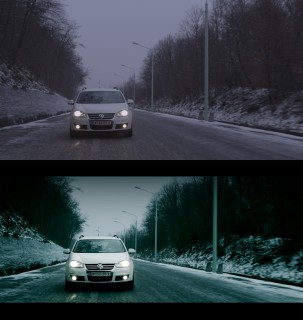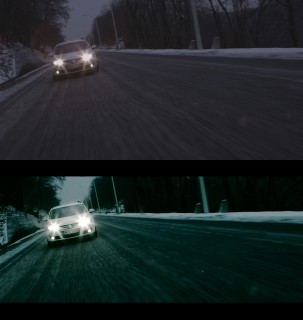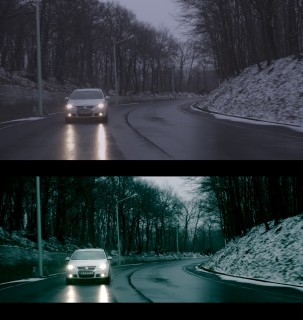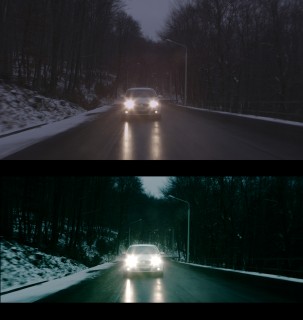RED Scarlet-X – Motion and Grading
Please watch in HD
We went out to shoot this yesterday among other things to test and get a feeling for the Scarlet-X.
In this particular test I wanted to shoot something that’s moving and would need a lot of post processing. The clips were gradually underexposed and there was a lot of shake because we simply shot from a tripod out the back of a truck.
Lots of thanks to the great team:
Production Manager: Rosalie Hübl
Unit Manager: Robi Faustmann
The Greatest Camera Assistant: Ralf Woltron
Digital Intermediate: David Wagner
Driver: Michael Jellasitz
Set pictures to follow soon.



 I used DaVinci Resolve lite, in fact this was the first time I went into DaVinci so please be mild in the comments. After a day of grading I started to know my way around the program a little. It’s a great tool and it did a good job motion tracking and stabilizing all of the shots. I can only recommend to get into it, but you’ll need a powerful machine, otherwise frustration is on schedule. The more shots you have in a timeline, the slower it gets.
I used DaVinci Resolve lite, in fact this was the first time I went into DaVinci so please be mild in the comments. After a day of grading I started to know my way around the program a little. It’s a great tool and it did a good job motion tracking and stabilizing all of the shots. I can only recommend to get into it, but you’ll need a powerful machine, otherwise frustration is on schedule. The more shots you have in a timeline, the slower it gets.
The quality on Vimeo is good, but if you’ve been editing in such crisp HD the whole day you realize the big difference, you should definitely check out the stills on the left. The quality and sharpness that results from the 4K Scarlet footage when scaled down to HD is breathtaking. People tend to underestimate the use of having 4K source footage. Not only does sharpness in HD increase, but you’ll have a lot more flexibility in post. In our test the larger images came in very handy when stabilizing the frame. We would have lost a lot of information otherwise.
As far as the underexposing goes I am yet too unexperienced to judge the Scarlet-X footage. I’m not used to having so much room in post production and playing around in such detail, usually the post house does that or I’m left with HDSLR stuff. It’s definitely wonderful to have this artistic freedom and not to be limited by poor quality. What comes out of the Scarlet can only be described as feeling analog for me. At a certain point with F-stop 9.0-10.0 I couldn’t pull the deep blacks back up very well. What you might not see in the footage, it was around 10 o’clock when we shot that, so in reality it wasn’t so dark there. I definitely also didn’t do a good job on the curves in the blacks.
The Scarlet-X records RAW files in its purest form, so whatever settings you change on the camera, it’s all just metadata, you can change it all in post with no quality loss. The Scarlet-X sensor is native at ISO 800. If you go to ISO 250 (as I did in the test) all that will happen is you’ll lose dynamic range.
If I were to shoot the scene perfectly I’d use ISO 800, some ND filters and open my exposure by 2-3 stops.
Thanks again to the team that helped me and thanks to you for watching. Merry Christmas!
[UPDATE]
You can download the original R3D RAW file here to play with:
DOWNLOAD
RED has a utility to inspect and do some grading on R3D files. Download REDCINE-X here.
























